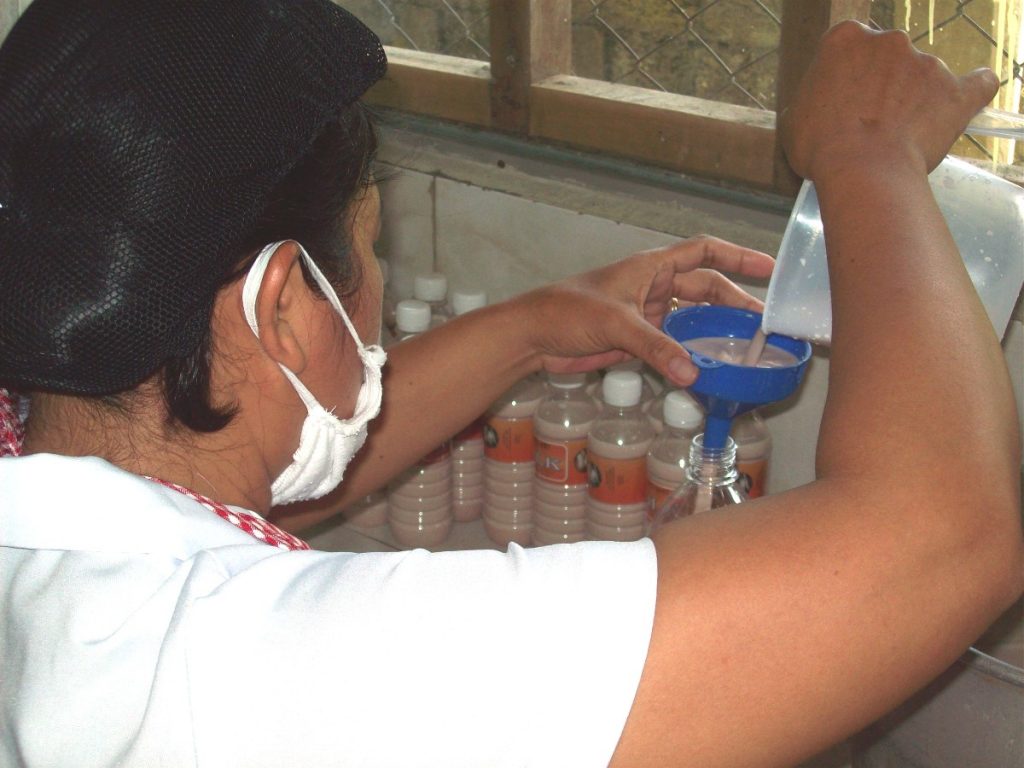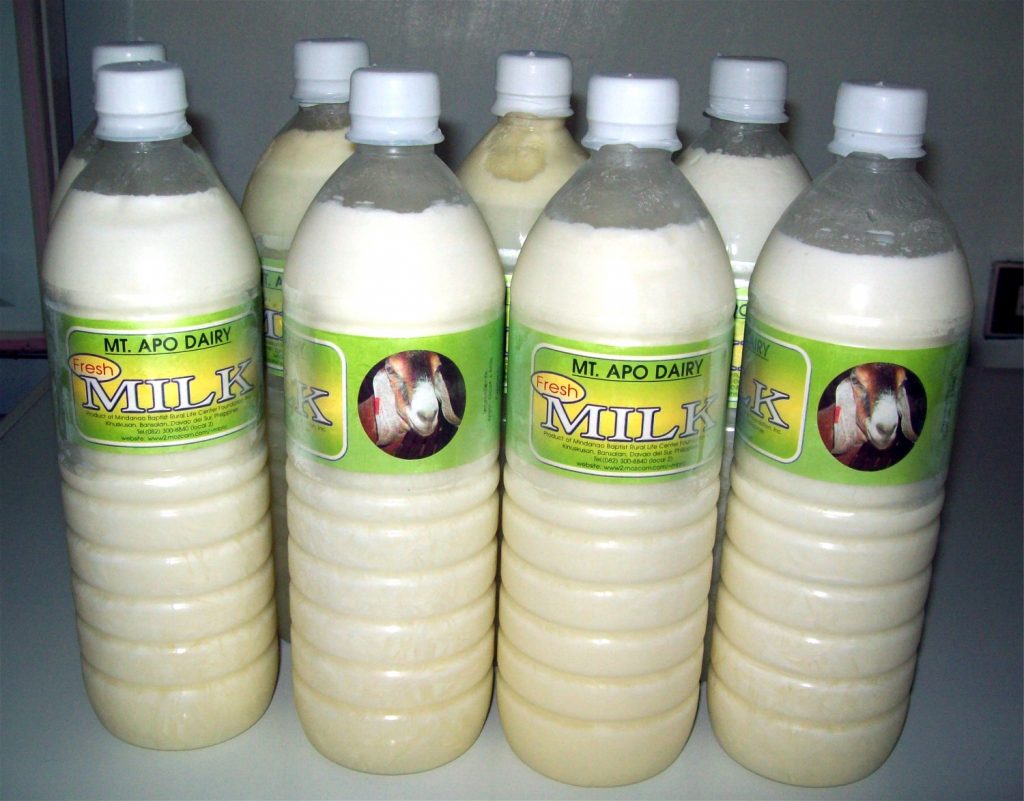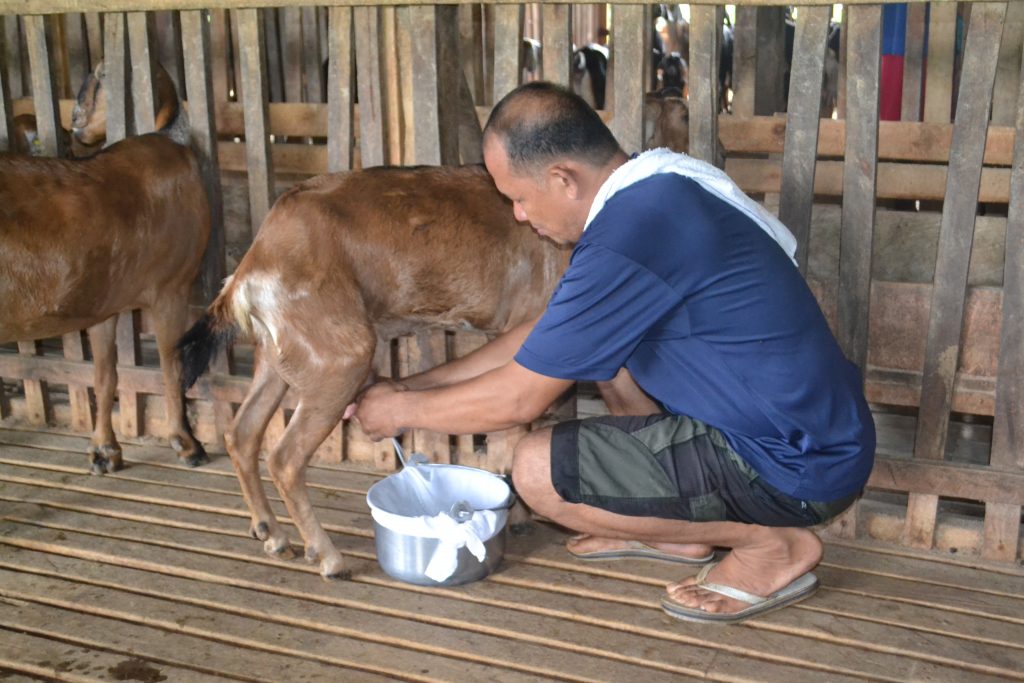Mariecar B. Jara, a Filipina journalist who now works for The Gulf Today in Dubai, United Arab of Emirates, and her siblings grew up drinking milk even until there were in college. “I only started drinking coffee and tea when I got married,” she said. “My children also grew up with milk all the way until now.”
Riza P. Lobitos, an elementary school principal in Davao City, also gives milk to her children because “I believe milk will give them more energy to sustain them in doing their tasks in school.” She also drinks milk before going to work every day.

Lilia Fuentes Lester, a nurse who is married to a British guy, said that she didn’t have time to find food that her children liked. “Milk is easy to make,” she admitted. “Even my nephews and nieces, I encourage them to drink milk.”
Milk is one of the most complete food. Nutritionists say milk is a good source of several important nutrients: a glass of milk reportedly contains calcium, protein, iodine, potassium, magnesium, phosphorus, zinc, and vitamins B2, B12 and D.
The Geneva-based World Health Organization (WHO) recommends breastfeeding for six months and breastfeeding in addition to other food for at least two years. In other countries, it is common to breastfeed children for three to five years.
In industrialized countries, people continue to consume milk beyond infancy, using the milk of cattle, sheep, and goats as a food product. But in developing countries like the Philippines, it is uncommon to see teenagers and adults drinking milk.
Milk, health experts claim, is not traditionally a part of the Filipino diet. In fact, most parents think their children already get enough nutrition from eating rice, the staple food of Filipinos.
The result: malnutrition. A study conducted by the Food and Nutrition Research Institute (FNRI) in 2003 has found out that 26 out of every 100-primary school-age children (aged 6-10 years old) were underweight and 37 out of every 100 were underheight.
One possible solution to the malnutrition problem, experts claim, is providing these children with milk. But the question is: where does the milk come from when the country’s dairy industry has remained badly underdeveloped.
“Although dairy industry is a vital component of our economic and nutritional development,” says Jethro P. Adang, the director of the Davao-based Mindanao Baptist Rural Life Center (MBRLC), “we are really lagging in terms of production compared with other Asian countries.”
A case in point is Indonesia. In 2015, milk production is the country was 20.39 million liters for the whole year, according to the Philippine Statistics Authority (PSA). In comparison, Indonesia produced 1.68 million liters of milk per day that year.
The good news is: the Philippine Dairy Corporation (PDC), the government agency tapped to help develop the dairy industry, is making some headway. But still, it is far behind its target of 20% national sufficiency in milk.
“Right now, the challenge actually for the dairy industry is to produce 99% more to be self-sufficient on our dairy requirements,” said Isidro Albano, chairman of the Dairy Industry Confederation of the Philippines, in a press conference two years ago. “For the longest time, Filipino local producers produce only one percent of the total demand.”

In terms of liquid milk, Albano said the country provides one glass of milk out of every three glasses needed. The annual per capita consumption of dairy products in the country is about 16 kilograms or roughly half of the recommended daily allowance.
As the country provides only one percent of its dairy requirements, the United States Department of Agriculture (USDA) believes the Philippines will continue to rely on imports to meet the requirements of its growing domestic and export markets.
For the United States, the Philippines is the largest Southeast Asian market for its dairy products. “Dairy products are the country’s second largest agricultural import after wheat,” the USDA reports.
The US supplies about 20% of the country’s milk needs. Majority (42%) of the dairy products, however, are imported from New Zealand. The remaining 6% comes from Australia.
In the last five years, the country spent between US$700 million to US$876 million to import these dairy products, said Senator Cynthia Villar, chair of the Committee on Agriculture and Food.
“At present, dairy production in the Philippines is heavily dependent on imports,” admitted Marilyn Mabale, the Mindanao department manager of the National Dairy Authority (NDA), whose main task is to create a thriving dairy sector to increase milk production in the country. “There is a need for the industry to accelerate and increase the local production to lessen our dependency from import.”
That’s a good news for Filipino farmers who want to engage in milk production. “With an average per capita consumption of 20 kilograms of dairy products and milk every year, a country with an estimated population of 110-million two years from now would be a virtual gold mine for dairy and milk producers,” said Secretary Emmanuel F. Piñol of the Department of Agriculture.
In the Philippines, there are three chief sources of milk: cattle, carabao and goat. Albano said that most of the liquid milk consumed by Filipinos comes from cattle (64%). The rest is provided by carabao (33%) and goats (3%).
Of the three aforementioned animals, the goat is the least expensive to raise and its milk is the best for infants and children. In addition, goat milk is less likely to cause allergy in humans, especially infants, than cow or carabao milk.
“Milk is our most ideal food, meeting nutritional needs better than any other single food item,” says Adang. The center he directs, located in barangay Kinuskusan, Bansalan is touted to be the goat capital of Davao del Sur.
Adang believes that by raising goats, farmers can help augment milk production in the country and lessen the malnutrition problem among children, especially those living in rural and upland areas.
“If only more and more farmers will raise goats in their farms, the health status of our children will improve,” Alimoane points out. “Not only that, our importation of milk and other dairy products will further decrease.”

Mario G. Montejo, when he was still the secretary of the Department of Science and Technology, thought so too. “Goats can turn our country into a land of milk in two years,” he pointed out. “The goat that many of us belittle is actually a gold mine.”
Studies conducted by the Laguna-based Philippine Council for Agriculture, Aquatic and Natural Resources Research and Development (PCAARRD) showed farmers who raise goats can increase milk yield in backyard farms from 45 liters in 90 days to 135 liters in 180 days. In commercial farms, a farmer can increase his milk production to 360 liters in 180 days.
As of January this year, the PSA reported that the total goat inventory was 3.76 million heads. This was 0.83% higher compared with the inventory last year. Inventory of goat in backyard farms increased by 0.87%. In comparison, goat population in commercial farms went down by 2.36%.
Among the regions with the highest inventory of goats were from Central Visayas, Western Visayas, Ilocos Region and Central Luzon. The combined stocks from these regions accounted for 48.36% of the country’s total goat inventory.
The PCAARRD says big dairy goat farms are located in Batangas, Tarlac, Sorsogon, and Camarines Norte in Luzon and Davao, Misamis Oriental and North Cotabato in Mindanao. – (To be continued)






